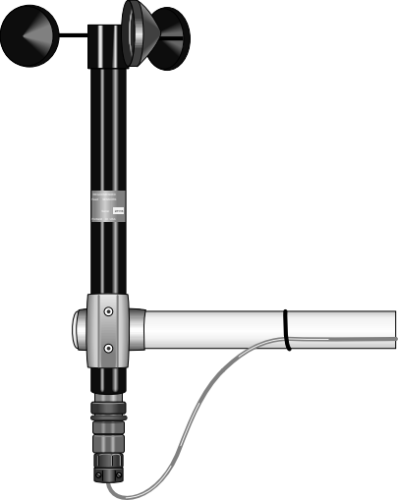Professional Tips for Calibrating Your Anemometer for Ideal Performance
Professional Tips for Calibrating Your Anemometer for Ideal Performance
Blog Article
Anemometers Revealed: Comprehending Their Significance in Ecological Monitoring and Precaution
The role of anemometers in environmental surveillance and precaution is commonly ignored, yet their importance is undeniable. These tools have a lengthy background rooted in scientific questions and technical advancements, evolving to end up being essential tools in different areas. From weather forecasting to aviation security, anemometers play a crucial duty in supplying accurate information that notifies decision-making procedures and improves total security. Understanding the ins and outs of anemometers introduces a globe of important insights that are essential to our understanding of the setting and the steps we require to guarantee safety.
History of Anemometers
The evolution of anemometers can be mapped back to the old worlds where rudimentary wind measuring tools were initial utilized. These very early wind dimension tools laid the structure for the development of a lot more advanced anemometers with time. One of the earliest well-known anemometers was the hemispherical mug anemometer created by Leon Battista Alberti in the 15th century. This style consisted of four hemispherical mugs that accumulated wind energy, providing a measurement of its intensity based on the speed of rotation.
In the 18th century, the prominent researcher John Thomas Romney Robinson introduced the Robinson anemometer, which featured 4 hemispherical mugs placed on horizontal arms that prolonged from a main axis. This design became a standard in meteorological measurements due to its accuracy and reliability. For many years, developments in modern technology led to the growth of more contemporary anemometers, consisting of ultrasonic anemometers and laser Doppler anemometers, using raised precision and performance in determining wind rate and instructions. The background of anemometers showcases an impressive journey of development and progress in the area of meteorology.
Kinds Of Anemometers
Throughout the area of meteorology, different kinds of anemometers have actually been established to accurately measure wind speed and direction. The most common kind is the mug anemometer, which contains three or four mugs placed on straight arms that revolve with the wind. As the mugs spin, the rate at which they rotate is straight symmetrical to the wind rate. One more extensively used kind is the vane anemometer, which features a tail or fin that aligns itself with the wind instructions. This placement permits the device to identify the wind instructions. Sonic anemometers use ultrasonic signals to determine wind speed and direction accurately. They are typically utilized in research study applications due to their high precision. Hot-wire anemometers run based upon the concept that the cooling result of wind on a warmed wire is symmetrical to the wind rate. These anemometers appropriate for gauging reduced wind rates with high accuracy. Each kind of anemometer has its strengths and is selected based upon the details requirements of the surveillance job handy. useful source
Applications in Meteorology
Having actually reviewed the different sorts of anemometers made use of in weather forecasting for gauging wind rate and direction, it is important to discover their functional applications in the area. Anemometers play a vital role in weather forecasting by supplying accurate and real-time information on wind conditions (anemometer). Meteorologists use anemometers to check wind rate and instructions to anticipate weather condition patterns, problem cautions for severe weather condition occasions like cyclones, hurricanes, and storms, and evaluate climatic problems for aviation safety and security
In weather forecasting, anemometers aid in comprehending regional and local wind patterns, which are crucial for forecasting weather condition modifications and identifying climatic patterns. These tools are additionally utilized in study to study microclimates, city warmth islands, and air contamination dispersion. In addition, anemometers are utilized in you can try here farming to optimize crop management techniques, such as irrigation and pesticide application, based upon wind problems.
Significance in Aeronautics Safety
An essential facet of guaranteeing air travel security depends on the precise monitoring of wind conditions utilizing anemometers. Anemometers play an essential role in aviation by supplying real-time data advice on wind rate and direction, aiding pilots in making informed decisions throughout touchdown, trip, and take-off. Uncertain and strong winds can significantly influence aircraft procedures, making it vital for aeronautics authorities to depend on exact wind measurements to ensure the security of travelers and staff.

In the dynamic setting of aeronautics, where even small modifications in wind speed and instructions can have extensive results, anemometers stand as crucial tools for promoting secure and protected air travel.
Duty in Environmental Research Study
Anemometers play an important role in ecological research study by providing essential data on wind rate and direction. By properly gauging wind attributes, anemometers help researchers assess the activity of toxins in the air, evaluate the influence of industrial discharges, and forecast the spread of impurities in the setting.


Final Thought
In verdict, anemometers have actually played an important duty in environmental tracking and safety and security actions. Recognizing the significance of anemometers is vital for properly measuring wind speed and instructions, which is crucial for forecasting weather patterns, guaranteeing secure aeronautics procedures, and conducting ecological research studies.
One of the earliest known anemometers was the hemispherical mug anemometer created by Leon Battista Alberti in the 15th century. Over the years, improvements in technology led to the growth of more modern-day anemometers, consisting of ultrasonic anemometers and laser Doppler anemometers, providing increased precision and efficiency in determining wind rate and instructions. Hot-wire anemometers run based on the concept that the cooling impact of wind on a heated cord is proportional to the wind speed. Meteorologists use anemometers to monitor wind speed and direction to forecast weather patterns, issue warnings for serious weather occasions like storms, typhoons, and tornadoes, and evaluate climatic problems for air travel security.
Understanding the value of anemometers is important for properly measuring wind speed and instructions, which is important for anticipating weather condition patterns, making sure safe aeronautics procedures, and conducting ecological researches. (anemometer)
Report this page